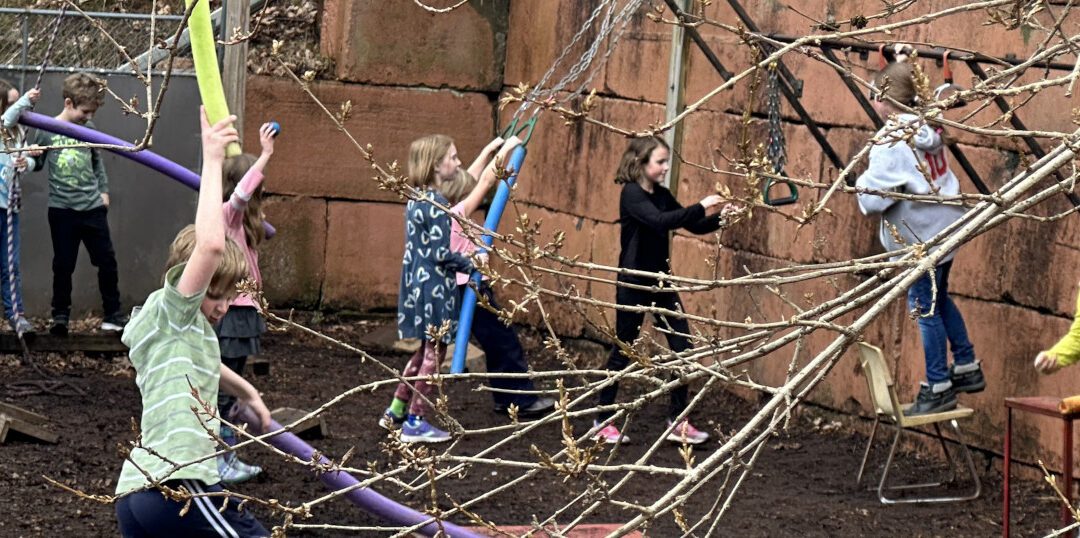We have been running the Playworker Development Course for almost 10 years now. It is still humbling to hear about people’s experiences while engaging with the course materials and how they apply playwork theory to real life. This is a guest written post by PDC student Austin Pack reflecting on how this course has changed the way he thinks about his work with children.
By Austin Pack
“Coach Pack?” This is the name I have chosen to use for the last 18 years as a Kindergarten-8th grade Fitness teacher, not my birth name that would relegate me to a specified career, some of my students have pointed out. My name is Austin, in fact.
I reply, “Yes, what do you need?”
“Coach, I can’t run the lap or play the game today. I sprained my ankle during recess” Or sometimes I hear “My stomach hurts”; “I broke my leg yesterday”; “I have a headache”; “I’m sick but I don’t need to go home”; “The doctor says I have a heart condition”. Yes, all of these have been utilised and upon further investigation most were found to be entirely false.
“Okay, well you can just rest and enjoy being outside on a lovely day,” I reply while attempting to conceal the skepticism fluttering in the breeze of my spoken words.
Often an exaggerated limp ensues as we move from the cinder track to our workout area deemed The Blacktop, a lively groan uttered for good measure. I know what to expect. I know the precise moment when the student shall be spontaneously healed.
The class is set up to have a warm up, then a workout, followed by game time, and if there is time left over we go into “Free Play.” We play games like Capture the Flag and a plethora of games that involve pretending to be animals chasing other animals. Students are encouraged to help create new rules for existing games and new games as well. The class often votes on which game shall be played. Our campus has no gymnasium, nor do I want one, and most of our Fitness classes are held outside in various outdoor spaces. When the weather is too rainy or too cold we head inside to the classroom, a rare occurrence.
The aforementioned scenario, of a student feigning injury or illness, occurs daily before the workout or the game.
However, whenever I yell the term “Free Play” all injuries and illnesses cease to exist. These students who are curled over in pain, in the throes of death, will jump up and bolt for the small area of woods next to our game field. Likewise, any injuries incurred during the “Free Play” time frame are bravely endured as to not disrupt play. Autonomy is an amazing healing agent.
My eureka event, the proverbial apple careening and plopping me on the head, came within moments of my first steps into the Playworker Development Course.
From the Essential Qualities of a Playworker (Module 1):
“When playworkers say “play”, we mean play in which children are able to decide what they want to do, how they will do it and whom they will do it with. For us, play is about children’s freedom to develop their own experiences and set their own challenges.”
As stated in the Playwork Principles:
“Play is a process that is freely chosen, personally directed and intrinsically motivated. That is, children and young people determine and control the content and intent of their play, by following their own instincts, ideas and interests, in their own way for their own reasons.” (Playwork Principles Scrutiny Group, Cardiff, Wales 2005.)
I froze.
I reeled.
“Freely chosen” was a jab to the jaw. I had been acting more the part of dictator than liberator.
“Play is inherently free.”
At first I saw these emotional injuries/illnesses as a failing of the student. After all, I am providing time for them to be outside moving and playing games. They should be thankful for this time. My class is often the favourite of many students in the school.
Ha! I now see the glaring hubris relayed in this former belief system. After all, we adults also find excuses, some elaborate, to free us from unwanted activities. Now I view this as the failing of my class meeting this specific child’s needs. I am not providing choices, I am restricting them.
I thought ‘game time’ and ‘play time’ were synonymous. ‘Game time’ is where I am providing space for a structured activity. My ‘game time’ is play for some, but not all students find value in the activity/game that I find important. I now also see that “Free Play” is a misnomer. Play is inherently free.
It took me reading the works of play theory experts to challenge my previously held notions.
However, my students have been teaching me about this for 18 years. I’m only now starting to listen.
